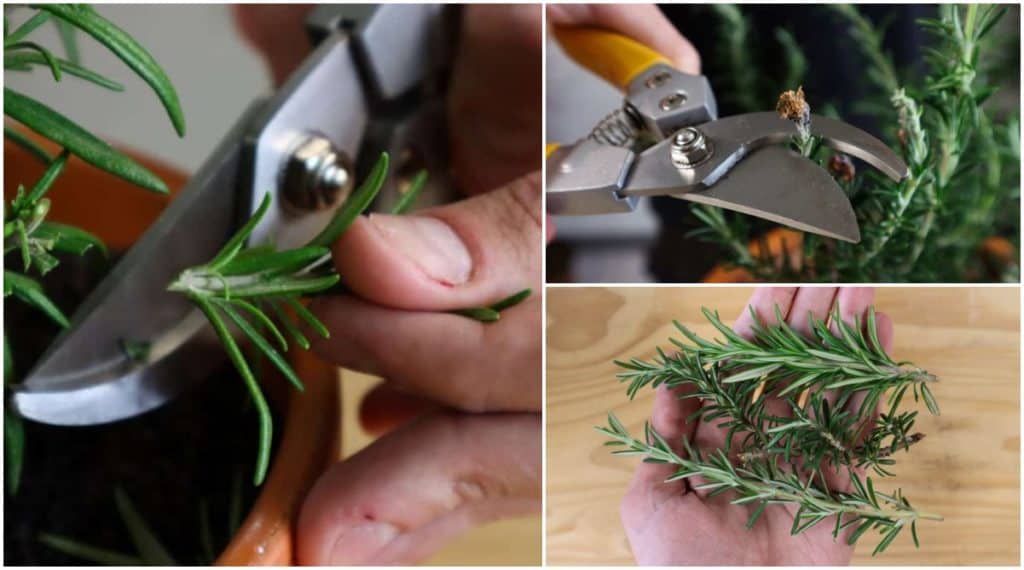
Rosemary is an herb garden staple. This reliable plant grows incredibly well in a wide range of conditions and can stand up to a bit of neglect, unlike some other fussier herbs.
Plus, they have many uses in the kitchen, from garnishing an array of dishes to lightly flavoring your afternoon gin and tonic.
While they are incredibly carefree plants, rosemary will benefit from the occasional prune.
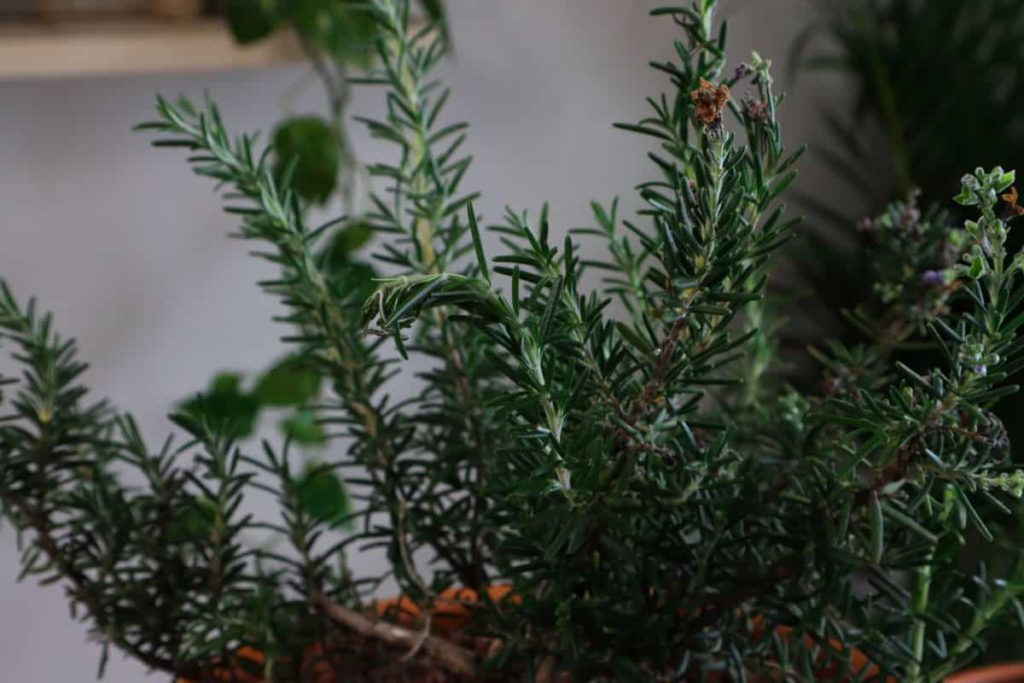
Related Reading: How To Plant A Rosemary Hedge & 10 Reasons Why You Should
There are many reasons to prune rosemary, from simple harvesting to an extensive cut back at the end of the season, each requiring slightly different techniques.
Follow these steps for a thriving rosemary bush that improves year after year.
When To Prune Rosemary
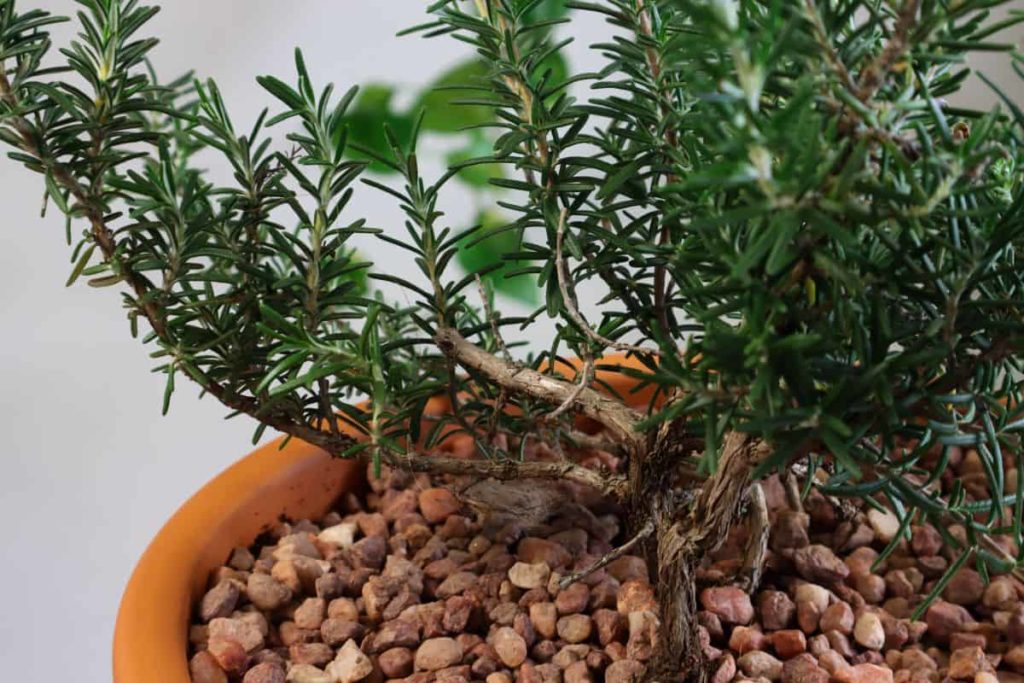
Before you get started, ensure you are pruning in the right season. Pruning the wrong way at the wrong time can cause issues with growth that may affect the plant long term.
Minor pruning – when harvesting or cutting back the branches for bushier growth – is best done in early spring.
A heavy prune – when cutting back hedges or large bushes to control size – is best done in fall. Allow at least a month for the plant to adjust before frost occurs to prevent damage to delicate growth.
Before You Start
Always start with a clean, sharp pair of pruning shears. For larger hedges with thicker branches, you may need a larger trimmer to make the process easier. Blunt shears can damage existing growth and make it more difficult for new growth to emerge. Ensure they are clean by washing with soap and water to prevent the transfer of bacteria or diseases that may inhibit growth.
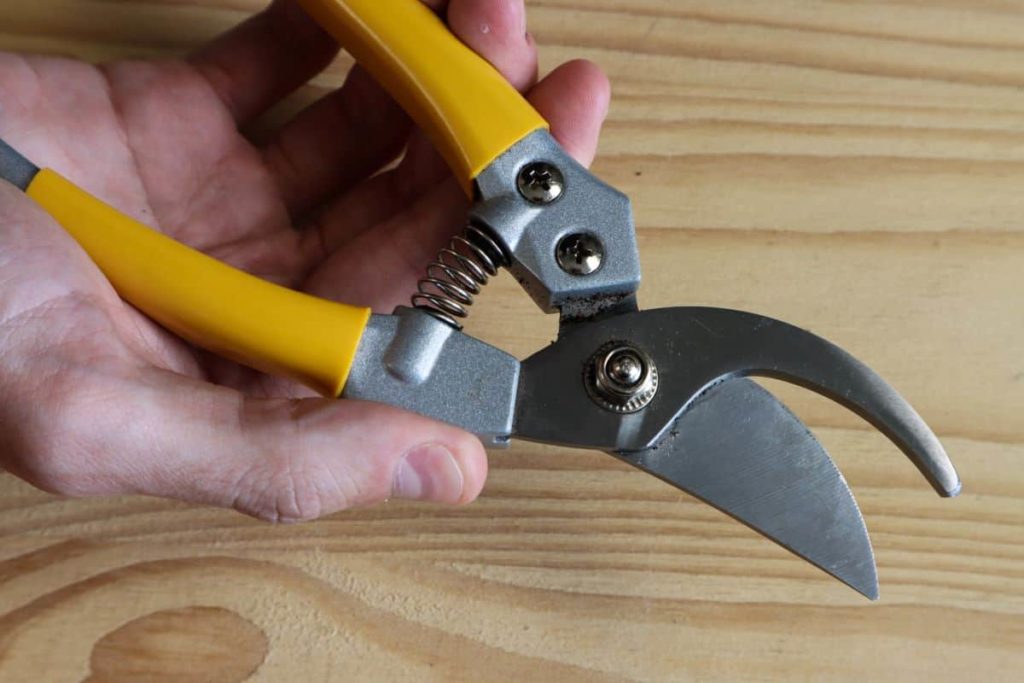
Pruning Rosemary For Bushier Growth
If you’re looking for bushier, denser growth on a sparse plant, pruning is the way to achieve it. This is best done when the plant is young and the branches are only a few inches tall. By pruning early, you can encourage the branches to split, developing more branches as the plant grows.
To encourage branching on young plants, choose branches that are around five inches long and cut back an inch or two. In new plants, the branches should still be relatively soft and not too woody, so cutting back this far won’t inhibit new growth. If your plant is slightly older, don’t cut back all the way to the woody stems as this can cause problems with emerging foliage in the wrong season.
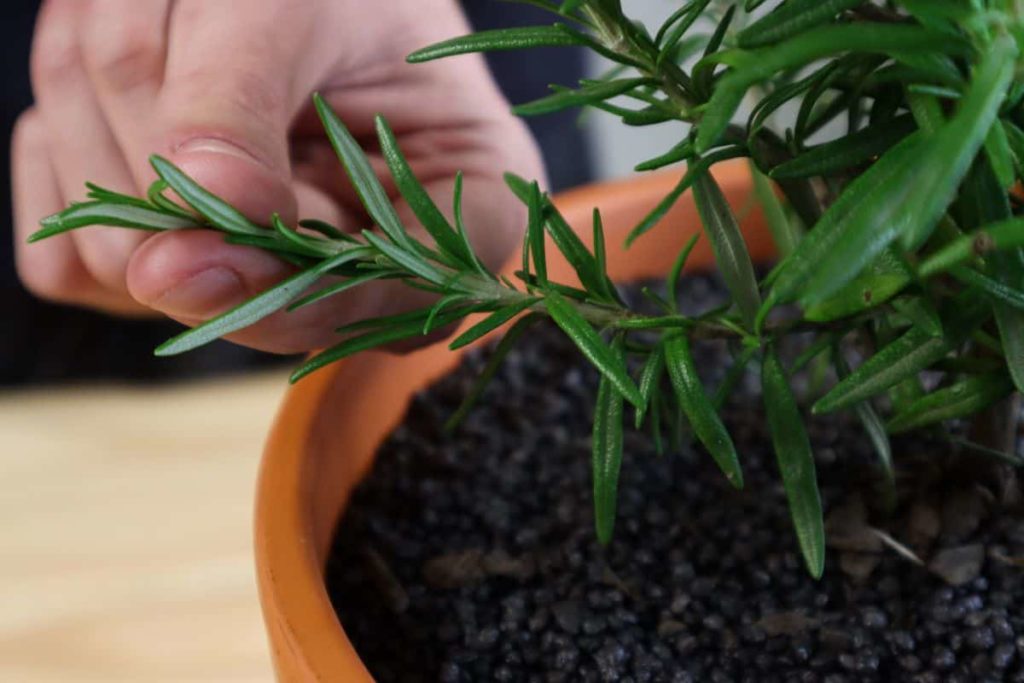
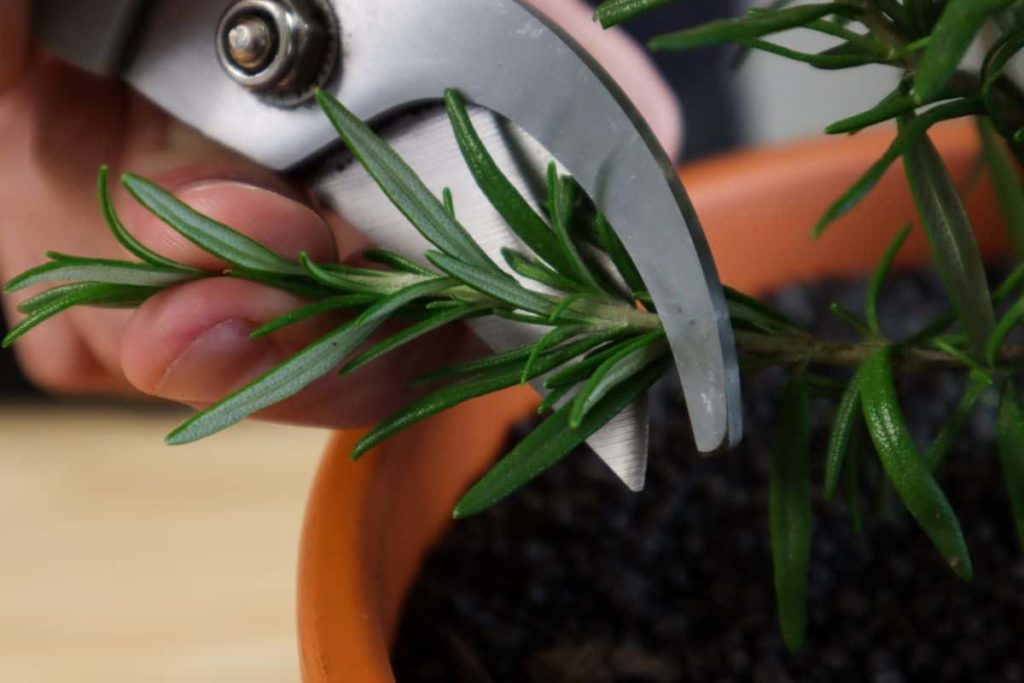
Prune older outer stems first as these are the most established. Cut each branch at a slight angle and save the cuttings for use in the kitchen. When pruned regularly during spring or summer, the young branches will often split off into two branches, making the growth bushier.
Pruning Rosemary For Harvesting
Pruning parts of the plant for harvesting is one of the most regular activities you’ll perform – it is the reason we grow rosemary after all.
Rosemary can be harvested any time of year, and is especially welcomed in warm winter dishes, but some care must be taken to ensure growth is not hampered by harvesting.
The best time to harvest for use in the kitchen is just before a branch flowers. This is when the sprig of rosemary will be the most flavorful. Remove the section of the branch just above where the woody growth ends to ensure it will grow back quickly.
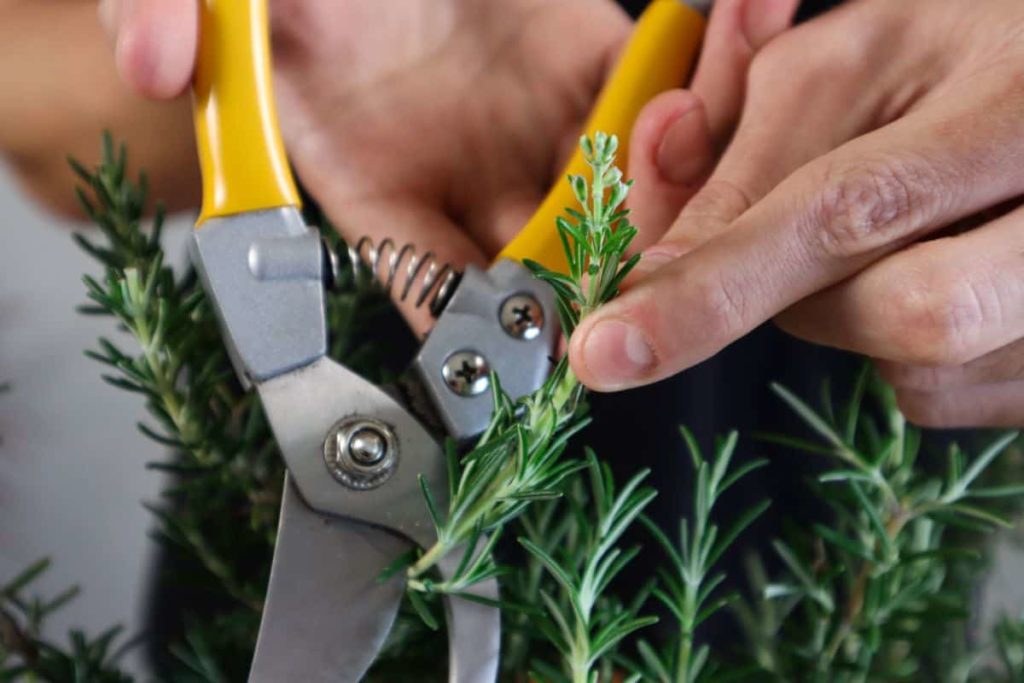
Start from the edges and work your way inwards. This will keep the plant looking tidy while preventing spotty growth in the center that may become difficult to control.
Never remove more than one quarter of the entire plant at one time. Removing too much foliage can cause shock, preventing the plant from coming back stronger.
When harvesting in fall or winter, only remove what’s absolutely necessary and use as little as possible, as it will only begin to grow back stronger in springtime.
Pruning Rosemary For Tidying
Not all pruning is for growth or use in the kitchen. A prune can also help your plant look more aesthetically pleasing, fitting in with the rest of your manicured garden.
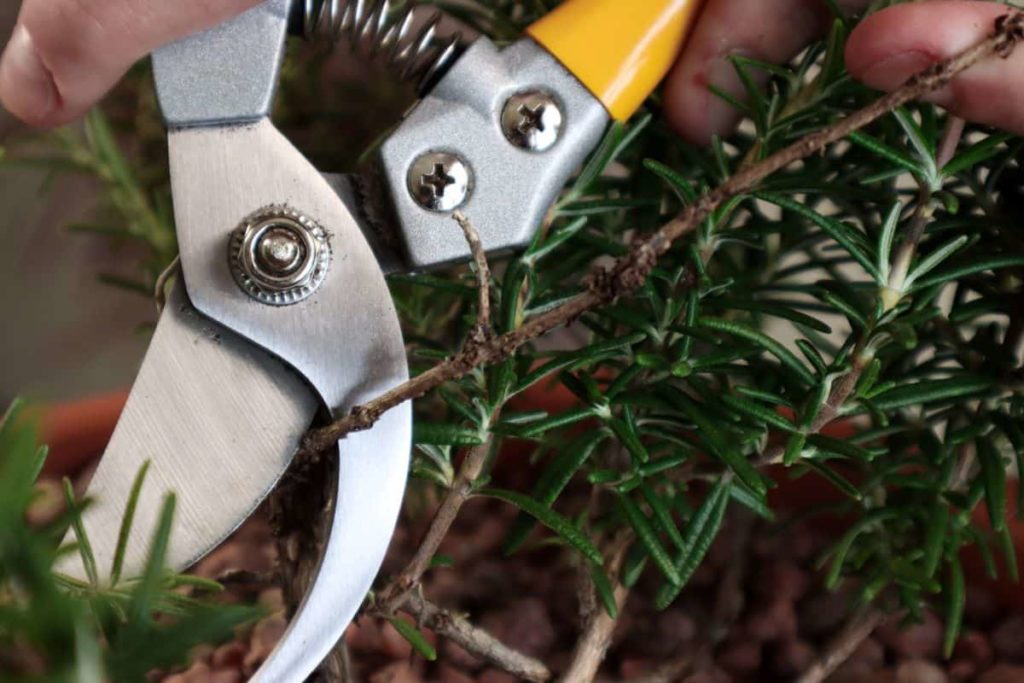
When pruning to tidy the plant, remove all underperforming or dying branches at the base. Any parts of the plant killed off by frost or disease should also be trimmed here. Trim any branches growing longer than the surrounding ones to keep the shape neat.
Remove any spent flowers at the same time to encourage the plant to focus on producing new growth.
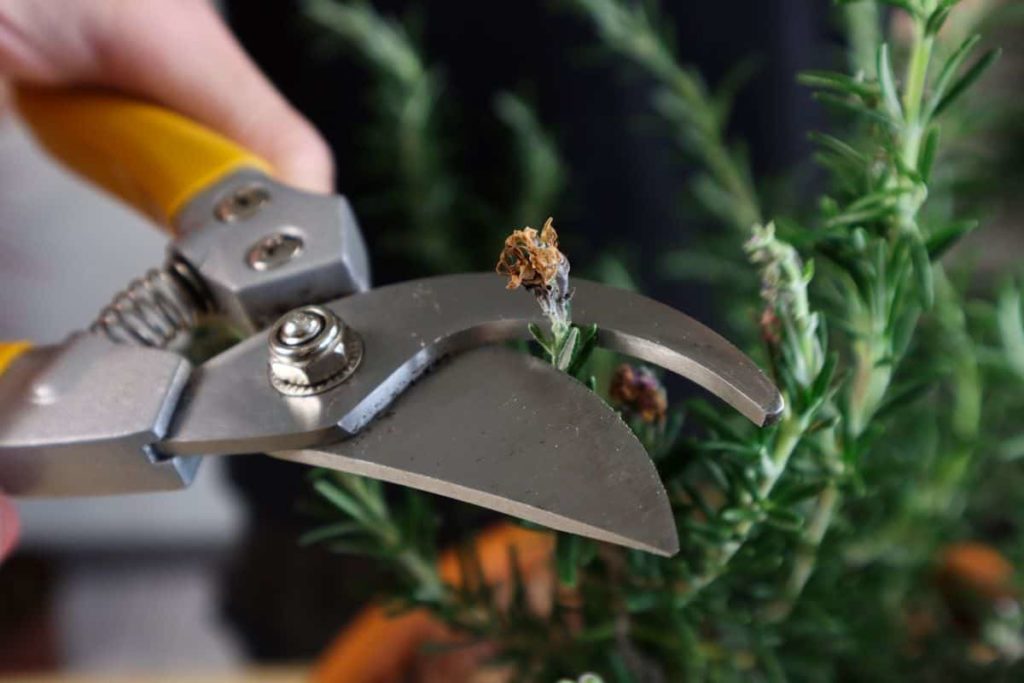
Pruning Rosemary For Shaping
While pruning your rosemary bush, use the opportunity to trim the plant into a neater, more appealing shape. Older rosemary bushes can grow incredibly dense and full, responding well to shaping in any way you see fit.
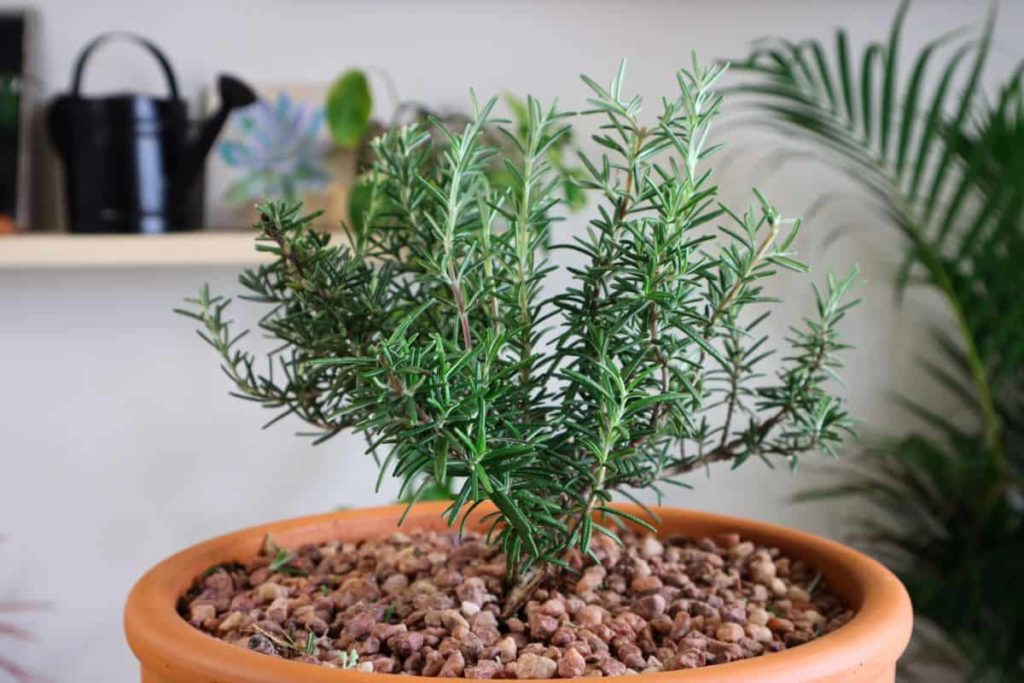
To shape the plant, start with the branches on the edges and work your way inwards, trimming each branch carefully to be the same size as the surrounding ones. For a spherical shape, chop the outer edges closer to the woody growth and keep branches in the center taller. Try to keep the angle of the cuts uniform to maintain tidiness.
Remove all sprawling or drooping branches that are difficult to control. These can be cut at the base, leaving the upright strong growth remaining.
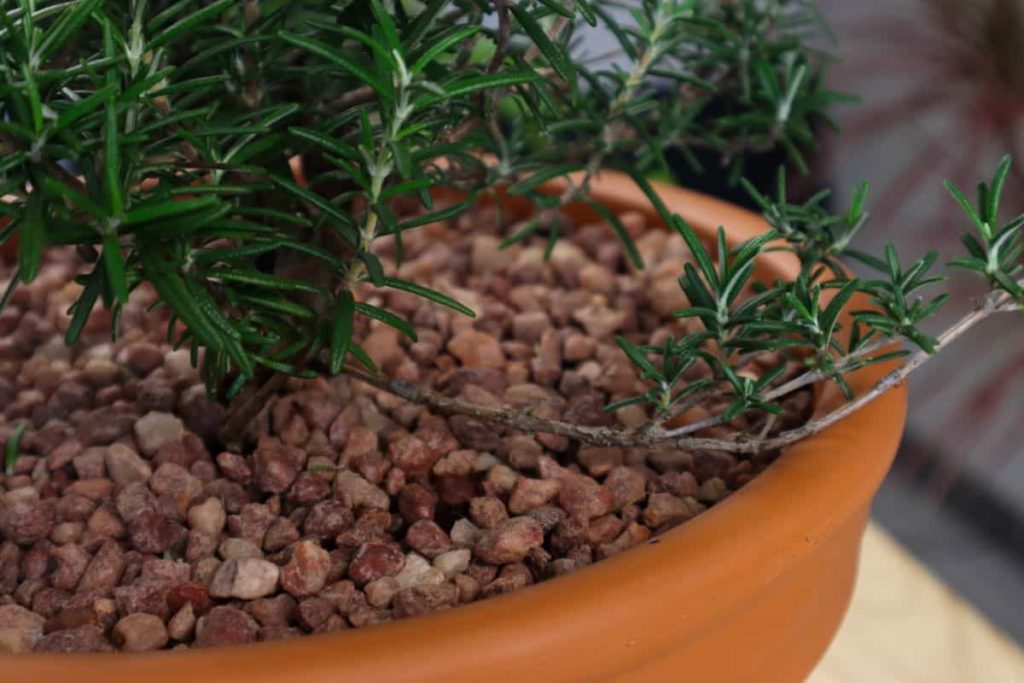
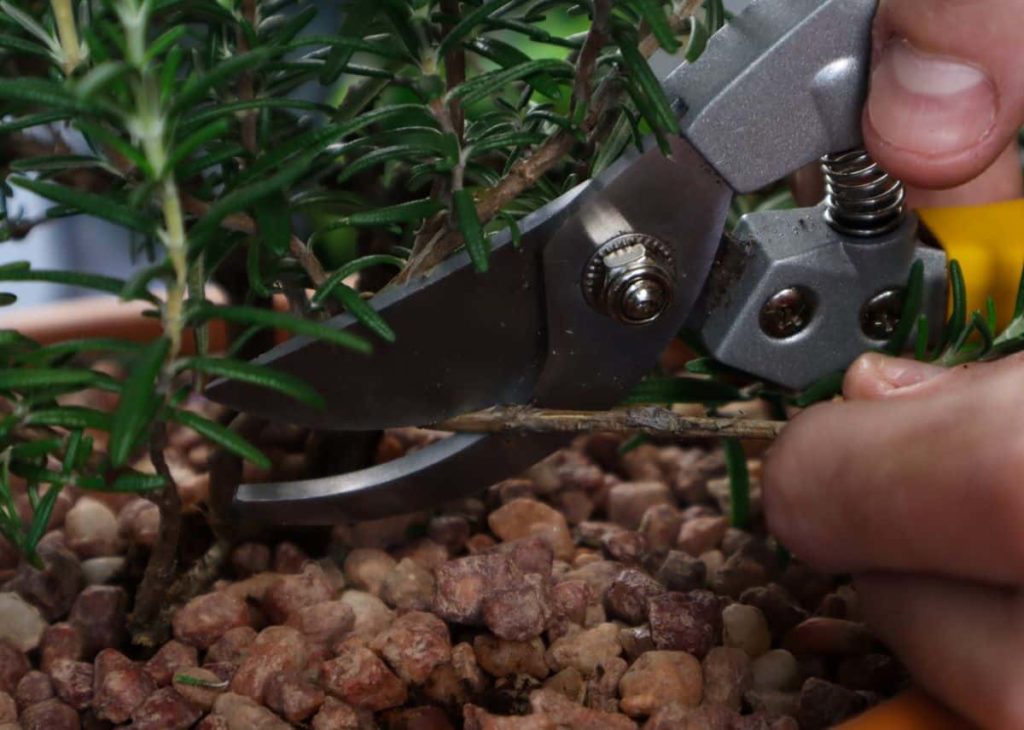
Pruning Rosemary For Size
When growing rosemary as a hedge or border plant, pruning can help control the size so it doesn’t overshadow surrounding plants. Cutting back large sections of the plant is best done in fall so no new growth emerges before the first frost, ruining your pruning progress.
To cut back a larger plant to control its size, simply remove all the longer stems back to the size you want them. Don’t cut the bush back too far, or the growth the following season may remain woody and unpalatable with little foliage.
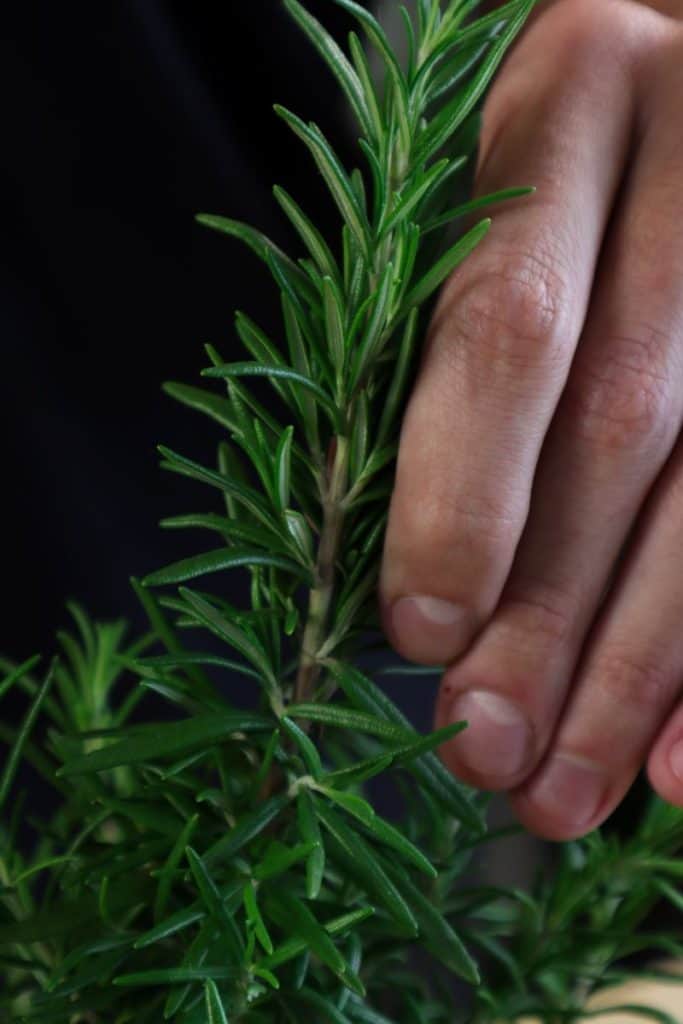
Cutting off a couple of inches with a pair of loppers should be enough to manage the size without inhibiting growth the following season. As a general rule of thumb, never remove more than 30% of the growth to ensure plenty of productive growth remains.
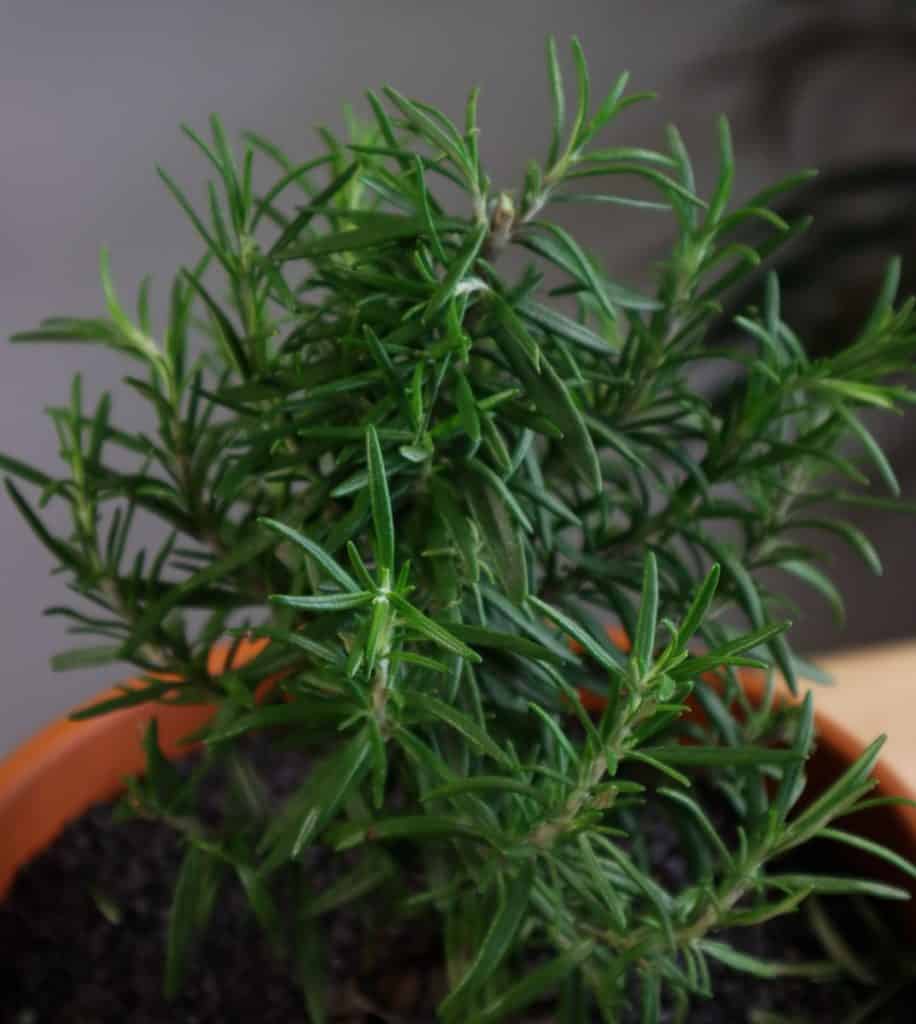
If you’ve skipped a pruning session and need to remove more than one third of your plant, you can prune in stages. Start by cutting back the top section of the plant. Wait about two months for the plant to recover before cutting again. Repeat this process as necessary, ensuring you leave plenty of time between trims to prevent shock.
Pruning Rosemary For Healthier Growth
An annual prune is not only beneficial to keep the plant tidy – it can also improve growth. Older growth or damaged and dying stems sap energy from the plant that could be put toward new, productive growth. A denser plant also provides you with more foliage for harvesting in the long run.
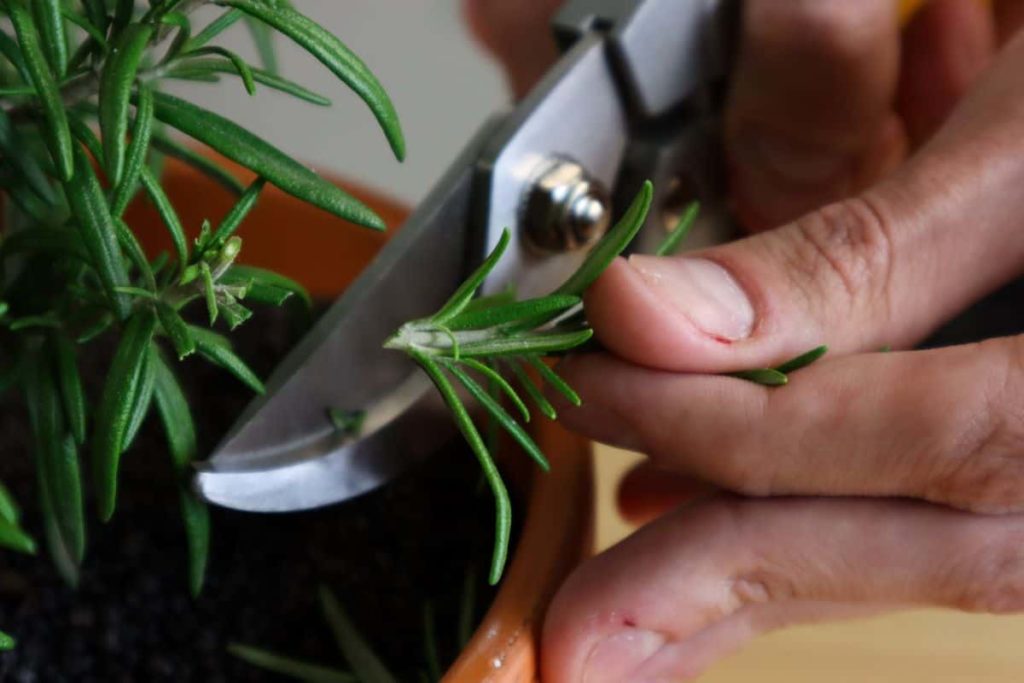
To promote growth, prune lightly in spring and summer every few weeks. Your regular harvesting prune should be enough to promote further growth. Then, in early fall, cut back the branches significantly to prepare them for new growth the following spring. At the same time, remove unproductive branches and tidy up any branches crossing over one another to improve airflow.
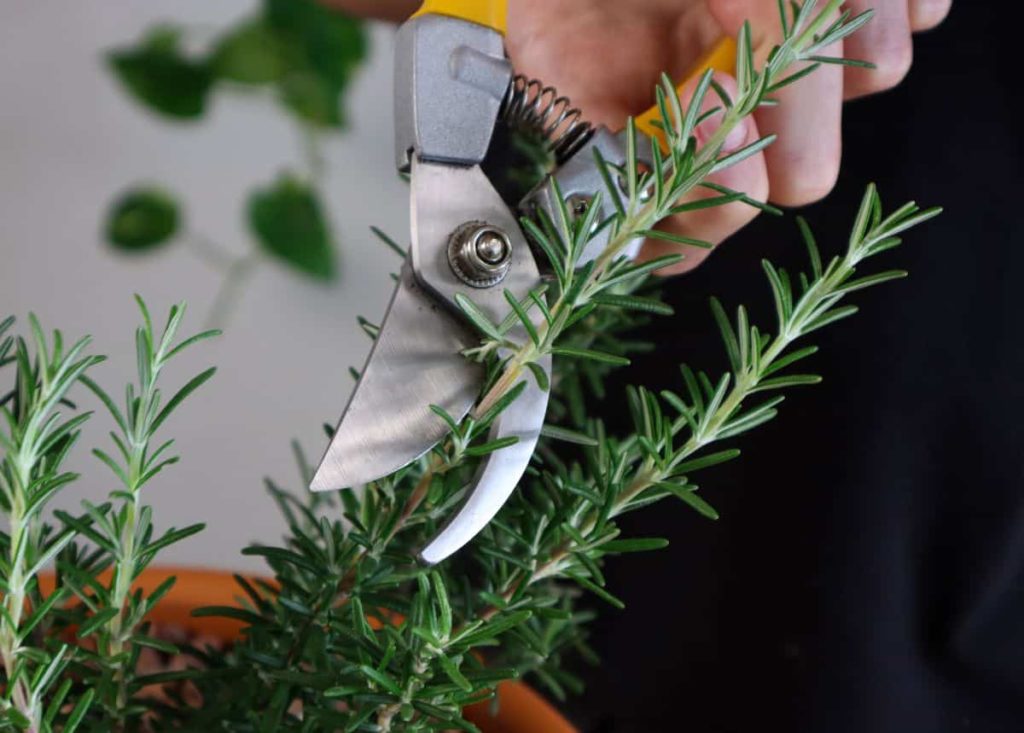
Your rosemary should have several weeks to harden off and recover before any frost hits. Vulnerable growth after pruning will face severe damage if exposed to cold weather. If pruned at the right time, growth should begin to emerge again next spring, hopefully coming back stronger than the previous year.
Make Use Of Your Rosemary Cuttings
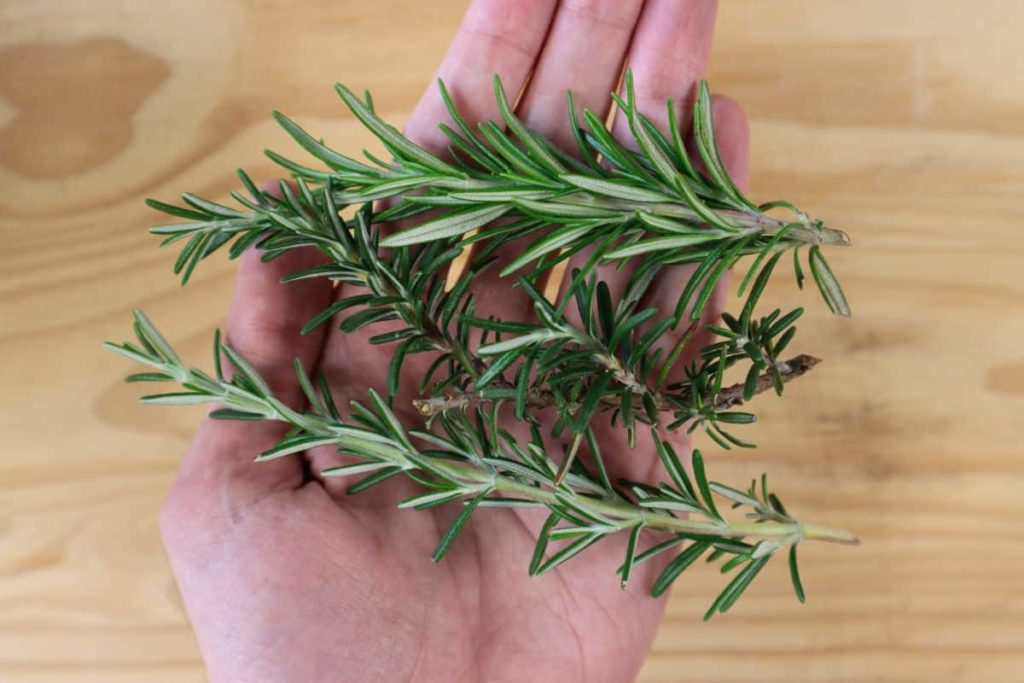
When pruning your rosemary, don’t let the parts of the plant you remove go to waste. Any excess can be used in the kitchen to flavor a range of dishes. As the moisture content is low, rosemary is also a great herb candidate for drying, extending the shelf life of the tasty foliage significantly.
If you don’t have any immediate uses in the kitchen, you can always root healthy cuttings to make even more rosemary plants. New soft growth can be rooted in water, but is more likely to root in a soilless medium like coconut coir and perlite or sand.
Our step-by-step guide to propagating lavender cuttings can be applied to your rosemary plant, too.
Remove the foliage from the bottom half of the cutting and dip it into rooting hormone powder to stimulate growth. Place the cuttings in a pot filled with the rooting medium, cover with a plastic bag to create humidity, and leave in a warm bright spot away from direct sunlight. Keep the soil moist and the cuttings should root within a few weeks.
